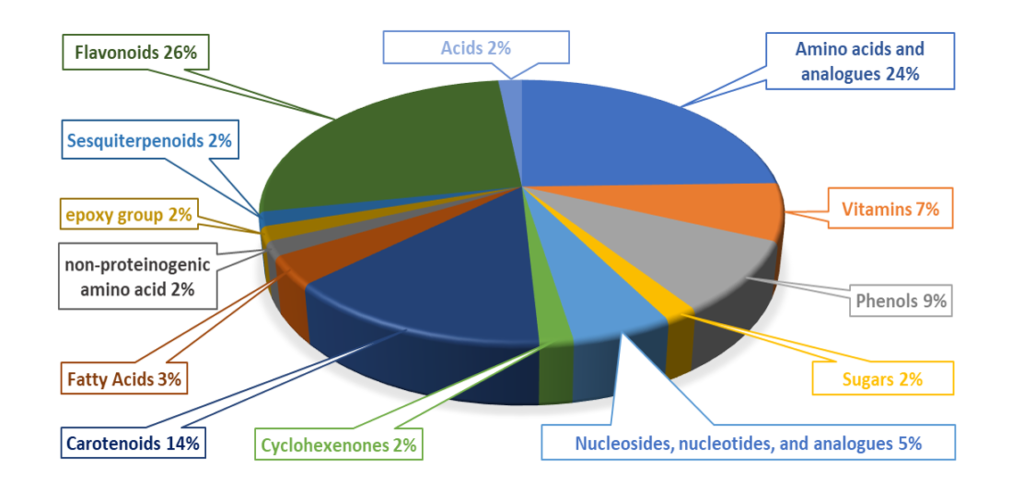Chemical Characterization and Authentication of Pelargonium Sidoeides Root
Taxonomy & Origin
Pelargonium sidoides is a member of Geraniaceae family and it is originated from coastal regions of South Africa. Our research mainly focuses on the Characterization of the chemical profile of Pelargonium sidoides rhizome, using our group’s in-house suspect and non- target screening workflows and methods.
These workflows and methods include:
Suspect and non-target screening workflow using a wide scope database of natural products containing flavonoids, lignans, phenolic compounds, anti-oxidants (>260.000 compounds)
This wide scope database can be used by the in-house R-based platform “AutoSuspect” to perform automatic suspect and non- target screening.
Each step of the screening workflow contains several novel algorithms, such as subtraction of the analytical procedural blank from the real sample raw data; a novel algorithm to match isotope fit; the retention time prediction workflow; and a modified mass spectra similarity index.


Total chemical content of pelargonium sidoeides root
Our main research interests comprise to:
HRMS was found to be highly efficient tool for the characterization of chemical profile of pelargonium sidoides root.
Totally, 25 compounds were identified by non-target screening workflow
Several coumarins, included umckalin and isofraxidin, were identified at very high concentration in the root.
Chemical Characterization and Authentication of Crocus Sativus (Saffron) Using LC-q-ToF-MS and Advanced Chemometrics
Taxonomy & Cultivation
Saffron is a spice derived from the flower of Crocus sativus plant, commonly known as “saffron crocus“ and it belongs to the Iridaceae family. It is cultivated mainly in countries like Iran, India, Italy, New Zealand, Spain, Portugal, Greece and Morocco. Our research about saffron mainly focuses on:
The Chemical characterization of each variety
Discrimination according to the way of “Trimming”, using Advanced Chemometrics

Different varieties according to the way of trimming

Total chemical content of pelargonium sidoeides root
Chemical characterization of saffron
60 metabolites were identified by target, suspect and non-target screening workflows.
These compounds belonged to amino acids, vitamins, polyphenols, flavonoids, carotenoids, antioxidants, phenolic compounds, cyclohexenones and fatty acids.
“ Trimming” discrimination because “weight” matters


The samples from 6 different varieties were successfully discriminated.
Saffron Powder prepared by fine grinding of Sargol, Pushal and Bunch parts of the plant and is often subjected to adulteration and fraud. Therefore, any adulteration can be determined easily in “Powder” saffron.
Bunch consists of both style and red-colored stigma and this characteristic is confirmed from the position of this variety in the PLS-DA.
Although it was observed that the bioactive content of each category is affected from the harvesting year, the samples of different harvesting years can be grouped and discriminated from the other varieties.

